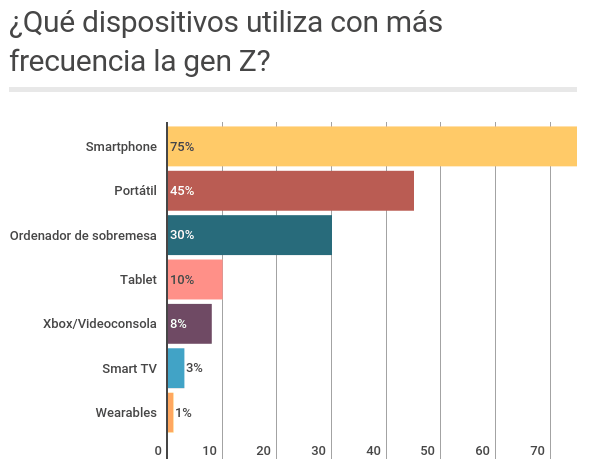We live in a consumer-oriented world that focuses more on the needs of the connected shopper than the retailer. A retailer that is constantly under pressure to analyze consumer data, implement strategies to attract and retain customers, and create a unique brand personality that allows your business to stand out from the competition.
According to a new study of Acapture today’s consumers are technologically advanced, have fully connected lifestyles across multiple devices, thus creating a constant fingerprint.
But the ones that are especially advanced about technology are Generation Z and Millennials. According to the study, their shopping habits and behavior will have a significant impact on e-commerce and retail in the near future.
Millennials and Gen Z
Millennials are considered to be the first generation of online shoppers, who have grown up in a landscape of companies like Amazon, Alibaba and eBay, their shopping habits pushed e-commerce to be the mainstream, often looking for a better relationship Value.
But unlike Millennials, 67% Generation Z consumers prefer to shop in a physical warehouse most of% the time, and another 31 prefers to go shopping at a physical store at times. In addition, mobile devices are less used to buy by Generation Z than millennials.

In an IBM study, a quarter of Gen Z respondents claimed to spend more than 5 hours on their mobile devices each day, but shopping online on mobile was not their main activity. 73% of them said their main activity was related to social activities, such as text messages or video calls.
On the other hand, while Millennials prefer virtual interaction, 53% Gen Z prefer face-to-face communication over email or instant messaging.
Omnichannel experiences
The digital landscape is evolving, responding to emerging trends from modern consumers, online and offline channels are converging to generate omnichannel sales experiences. Good experience and personalization are the key words for the modern consumer. The 70t% of purchases are based on an emotional connection to a brand, and how the consumer believes it is being treated.
Today, consumers are not simply buying, but are investing in a holistic experience, so companies must work to get a positive experience for their buyers by building personalization make a responsible and positive impact on society.
Acapture’s study shows that omnichannel features, which combine different platforms and channels including mobile payments, wearables and in-store experiences, are an important factor.
Click and Collect
Physical store retailers, in the shadow of e-commerce giants like Amazon and Alibaba, face the complexity of delivering enhanced brand experiences.
The relatively simple but sloppy click and collect model remains one of the most effective means for a retailer to join their online and offline channels.
Physical presence gives the retailer the opportunity to build a face-to-face service, offer consumers a simple and convenient way to pick up and return the product, and facilitate a 360-year brand experience.
Research indicates that the concept of click-and-collect, and clean return management, has great advantages for both the consumer and the retailer.
A focus on direct communication with the customer is also important in a click and collect model, especially to keep the customer updated on their purchase, since according to the study, the 25% of the purchases that are made with the click and collect model they are never collected because the customer does not know that their purchase has arrived at the store.
Consumers feel ignored in networks
Communication with the customer is everything, and to be able to offer a good and personalized experience you have to listen to him at the same time that it must be potential for them to share their opinions.
Social media is a good way to achieve this, because while customers can share their experiences, whether good or bad, companies themselves can clearly hear what customers are saying. This, in theory, should make it easier to offer a good customer experience, so that you re-buy in the store and put positive feedback on the networks about it or recommend it to your friends.
However, there are many companies that are failing to provide a good customer experience. In a global Qualtrics study, which surveyed 1,700 consumers, 40% of them said they believe their comments left on social media are ignored by companies or simply read above most of the time, regardless of whether complaints are given through social media, or surveys or even made personally.
Social networks and the Internet are very important means for brands, since they are widely used by consumers, they are also used to try to position themselves and as a data source to get to know consumers better, or that is usually the message. However, they do not feel that brands and companies are striving to get to know them and connect with them in this scenario.
These issues need to be resolved as soon as possible in order to continue to maintain the customer’s trust and to remain the customer’s priority.
Investing in technology
In order to deliver truly interactive and personalized experiences, retailers must invest in big data, the Internet of Things, Artificial Intelligence, and machine learning.
Technologically advanced consumers are always connected to Internet of Things devices. These traceable routes provide multiple data collection points and retailers can optimize their offerings by leveraging these data sources and turning them into intelligible insights.
Machine learning and Artificial Intelligence optimize this excess information, and powerful software can cross-reference consumer preferences with product offerings, and provide individualized personalization to the consumer. Artificial Intelligence bridges the gap between data and customer experience.





















